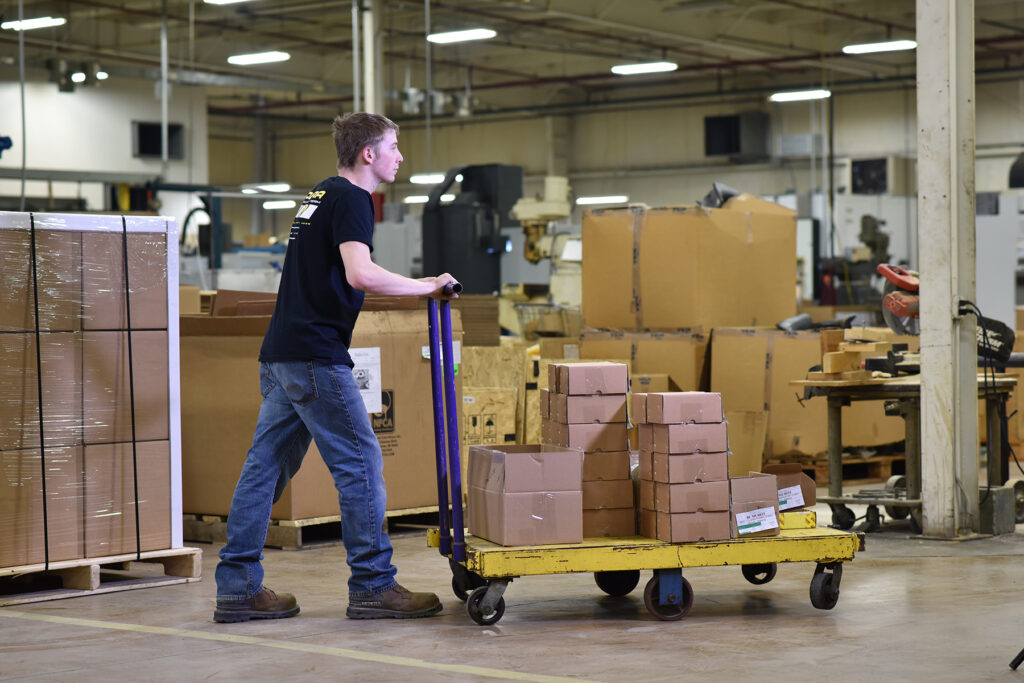Manual material handling has been part of hands-on work since work has existed. With wear-and-tear on the body being inherent with hands-on work, musculoskeletal disorders (MSDs) have been around for just as long. MSDs occur when the physical and/or mental demand to the worker repeatedly exceeds those capabilities, and inadequate recovery time results in less work capacity with each work cycle. As dangerous to the company as they are to the worker, MSDs cost $32.9 billion per year in workers compensation alone. Add that to indirect costs from lost time, decreased productivity, and worse quality of life, and reducing MSD risk in the work-environment becomes priority.
Engineering physical demand out of manual handling tasks is key to minimizing risk and involves using equipment that reduces or eliminates recurrent excessive forces and awkward postures to operators on the job. Recently, Glock et al. published a systematic review analyzing the efficacy of certain assistive-handling devices. The review is specific to warehousing, but the findings apply across industries.
Retrieval Aides
These involve trolleys and trucks that assist with travel and transport of items. There were several types assessed.
- Hand trucks: L-shaped carts that are generally used for moving non-loose loads such as boxes or furniture. They are elongated, have wheels and a ledge on one end, and handles on the other.
- Flat platform & cylinder trolleys: Consist of flat, rectangular (platform) or circular (cylinder) surfaces riding on 4 casters. They are used to transport large, heavy loads and gas cylinders, respectively.
Common difficulties with these devices involve instability during transport, obstructed view, and tendency for overload with exposure to excessive forces. Overall, however, they are effective alternatives to carrying.
Pallet Jacks
These are two-pronged forks on wheels, attached to a lever handle that raises the forks when pumped to lift pallets for transport. They can be used to move full pallets of product or material. Here, 1- and 2-handed designs were assessed.
- Standard 1-handed pull-handle: operators pull the pallet jack from behind them, or by walking backwards, using a single arm. This design requires less muscle activity overall and lowers compressive and anterior-posterior shear forces in the trunk.
- 2-handed push-handle: operator grip the handle with both hands, and push the pallet jack. This increases muscle activity and stresses the trunk, but reduces torsion and lateral-shear forces in the trunk and is preferred by users over the 1-handed model.
Carts
Carts feature flat surfaces, transport bins, or shelfs that operators push or pull to transport materials. Carts with height-adjustability enable operators to adjust the work to a comfortable hand-working height. The surface can also minimize heavy lifting when adjusted to the surface height of the load; operators can then slide objects on or off of carts instead of lifting.
- Height-Adjustable carts can be raised or lowered by a manual or motorized actuator. For example, foot pumps, manual cranks, and electric motors all serve the same purpose but motorized options remove risk of manual adjustment and are preferred. Compared to traditional carts, height-adjustable carts were shown to significantly reduce risk of injury.
- Self-Leveling carts are spring-loaded devices that automatically raise or lower the surface height with changes to spring tension under varying loads . These carts require no action by the operator and significantly reduce muscle activity and task time.
Lift Assists
These devices handle the load in place of the operator. They can be manual, motorized, and come in a variety of types. Here, articulating arms, hoists on rails, and hoists on pivots were compared.
- Manual hoists with a rail system are those which can suspend a heavy object and are pushed to move the object in a horizontal plane toward a target area. These tend to exceed recommended force limits of workers while accelerating or decelerating an object, due to the rail friction, movement distance, and target area, and are best suited for the longest travel distances. Consider motorized options for moving heavy loads.
- Hoists with fixed pivots vertically hoist an object and rotate around a hinge for movement through a curved path. These hoists enable fast work but require 45% to 75% more force compared to articulating arms and manual hoists with rails. These are best suited for lightweight loads over short distances.
- Articulating arms are diverse in design and built for material handling in any situation. These improve productivity and reduce risk of injury for medium-weight and medium-distance handling, and have been shown to significantly reduce lower back forces.
For more content on material handling, take a look at these resources:
Safety Report: 2018 Liberty Mutual Safety Index (worklete.com)
Christoph H. Glock, Eric H. Grosse , W. Patrick Neumann & Andrew Feldman (2020): Assistive devices for manual materials handling in warehouses: a systematic literature review, International Journal of Production Research, DOI: 10.1080/00207543.2020.1853845
